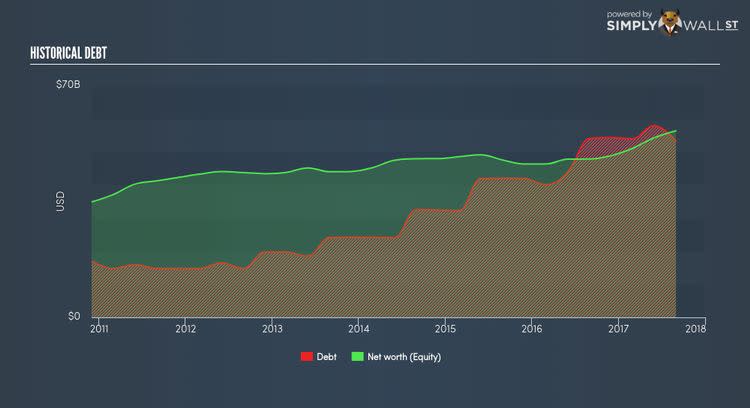Are Oracle Corporation’s (ORCL) Interest Costs Too High?

A market capitalization of USD $202.96B puts Oracle Corporation (NYSE:ORCL) in the basket of stocks categorized as large-caps. These stocks draw significant attention from the investing community due to its size and liquidity. However, a more fundamental aspect of investing in large caps is its financial health. Why is it important? A major downturn in the energy industry has resulted in over 150 companies going bankrupt and has put more than 100 on the verge of a collapse, primarily due to excessive debt. Thus, it becomes utmost important for an investor to test a company’s resilience for such contingencies. In simple terms, I believe these three small calculations tell most of the story you need to know. View our latest analysis for Oracle
Can ORCL service its debt comfortably?
Debt-to-equity ratio standards differ between industries, as some some are more capital-intensive than others, meaning they need more capital to carry out core operations. Generally, large-cap stocks are considered financially healthy if its ratio is below 40%. For ORCL, the debt-to-equity ratio is 94.55%, which indicates that the company is holding a high level of debt relative to its net worth. In the event of financial turmoil, the company may experience difficulty meeting interest and other debt obligations. No matter how high the company’s debt, if it can easily cover the interest payments, it’s considered to be efficient with its use of excess leverage. A company generating earnings at least three times its interest payments is considered financially sound. In ORCL’s case, its interest is excessively covered by its earnings as the ratio sits at 13.91x. Debtors may be willing to loan the company more money, giving ORCL ample headroom to grow its debt facilities.
How does ORCL’s operating cash flow stack up against its debt?
A simple way to determine whether the company has put debt into good use is to look at its operating cash flow against its debt obligation. This is also a test for whether ORCL has the ability to repay its debt with cash from its business, which is less of a concern for large companies. ORCL’s recent operating cash flow was 0.28 times its debt within the past year. This is a good sign, as over a quarter of ORCL’s near term debt can be covered by its day-to-day cash income, which reduces its riskiness to its debtholders.
Next Steps:
Are you a shareholder? Although ORCL’s debt level is towards the higher end of the spectrum, investors shouldn’t panic since its cash flow coverage seems adequate to meet obligations which means its debt is being efficiently utilised. Given that ORCL’s capital structure may differ over time, You should continue examining market expectations for ORCL’s future growth on our free analysis platform.
Are you a potential investor? Although understanding the serviceability of debt is important when evaluating which companies are viable investments, it shouldn’t be the deciding factor. After all, debt is often used to fund or accelerate new projects that are expected to improve a company’s growth trajectory in the longer term. As for next steps, I recommend potential investors to look at ORCL’s Return on Capital Employed (ROCE) in order to see management’s track record at deploying funds in high-returning projects.
To help readers see pass the short term volatility of the financial market, we aim to bring you a long-term focused research analysis purely driven by fundamental data. Note that our analysis does not factor in the latest price sensitive company announcements.
The author is an independent contributor and at the time of publication had no position in the stocks mentioned.


